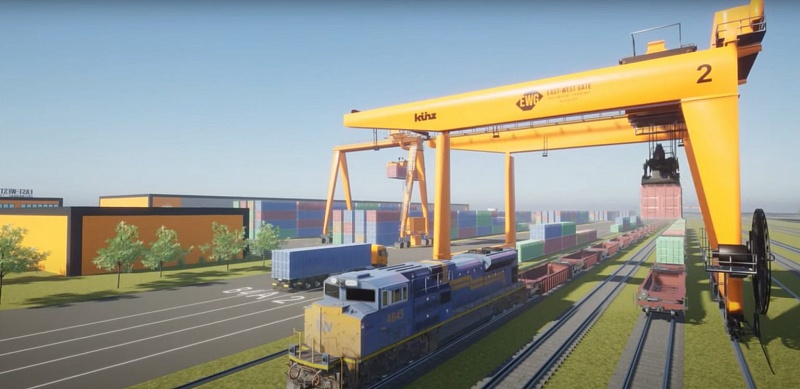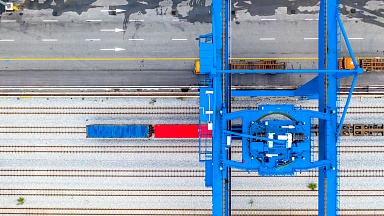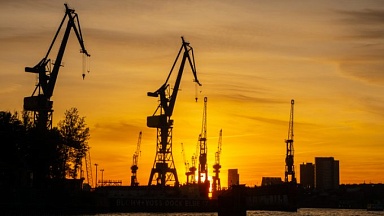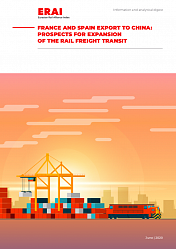The movement of trains, trucks, cranes, transport vehicles and goods will all be followed in real time. The software is provided by Hungarian startup MaxWhere, which signed the contract last Friday 15 October, at the East European Intermodal Conference organised by the Association of Hungarian Logistics Service Centres.
MaxWhere will collect, process, and display real-time information from all subsystems of the logistics centre, helping to plan, optimise and increase efficiency via the terminal’s own 5G network, in accordance with the principles of Industry 4.0. This is another term for the digital transformation the supply chain is currently going through.
Digital Twin
MaxWhere will be implementing a true Digital Twin of the East-West Gate terminal that simultaneously facilitates efficient functioning, alerts for emergencies, and enables real-time 3D monitoring of the terminal’s operation. Collecting and combining data from several subsystems of the facility, such as the terminal’s operating system, the access gates, the crane control units or the cameras, the solution developed by the Hungarian startup channels information to the operators in real time, allowing them to track and immediately correct any irregularities in 3D via remote control.
Thanks to EWG’s own 5G campus network, MaxWhere is able to monitor trains, trucks, containers, people, and transshipment with extreme punctuality and precision – the graphical environment and visualisation of the solution scalable on demand. The system tracks the movement and position of cranes with an error margin of just five centimetres, while also being connected to railway access gates, OCR gates used for the identification of containers, barriers, and scales.
East West Gate terminal
An investment of East-West Intermodal Logistics Plc., the East-West Gate intermodal railway terminal has been under construction near the Ukrainian-Hungarian border since January. The first trains are expected to run through the terminal early next year, and according to the operator, it will be one of the largest and most modern logistics hubs on the rail corridor connecting Asia and Europe.
At the terminal, all devices will use a 5G network and other solutions for communication and, a world first, for the remote control of giant cranes capable of fully automatic operation and the most delicate movements. Ensuring compliance, detecting anomalies, and initiating alerts
Controlling each movement
Since every step of the operation of a transshipment terminal is carefully planned and controlled, the system can compare ongoing operations with daily work plans and pre-determined operating rules, thus being able to detect anomalies and predict potential errors. Not only does it send a warning when, for example, a truck leaves its designated area and enters the scope of a crane, but also if the indicated order of containers on a railway train is changed, which may lead to confusion, or if operators fail to store a container at its designated location. In addition, the system indicates if there is an unauthorised attempt to enter the terminal. In this case, operators can use the software to direct security cameras to the scene immediately.
Moreover, daily operation plans allow operators to run future simulations, to prepare in advance for the tasks of the shift ahead. The same knowledge can be used for teaching and learning purposes even before the terminal is launched.
Increasing efficiency
“With the use of world-class technologies, the East-West Gate terminal serves its customers efficiently, quickly, and accurately, contributing to the reliability of the route connecting Asia and Europe and to the expansion of traffic. Developed by the Hungarian startup, MaxWhere represents the same state-of-the-art technology, which is the right solution for further increasing efficiency, said János Tálosi, CEO of East-West Intermodális Logisztikai Zrt.
Three-dimensional operational visualisation is still gaining momentum worldwide. We are proud to be able to enter this competition with our world-class solutions and cutting-edge technology, successfully used for increasing the efficiency of operations at the East-West Gate, said Márk Hetényi, CEO of MaxWhere Solutions Zrt.
Terminal map
ProMedia Group, the publisher of both RailFreight.com and RailFreight.cn, together with its content partner UIRR are publishing the RailFreight European Terminal Map 2022.
Would you like to advertise and be visible on the map, which is printed in B0 (1414mm x 1000 mm) and is distributed to 15.000 shippers, forwarders and logistical organisations across the globe? Fill out your information and we’ll send you the possibilities and the available positions directly.




